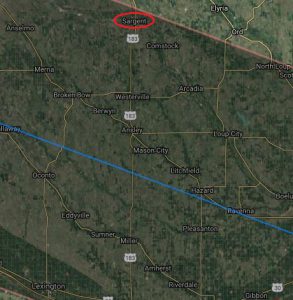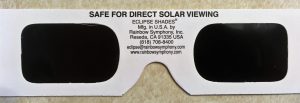I’ve heard many people express that they think this eclipse talk is making a big deal about nothing. Well, if we have cloudy weather that day, this statement may be true. It will also come true if one decides to sit inside during the eclipse and watch it on TV or internet. However if the day is clear and you go outside and actually experience the full eclipse for yourself, I guarantee that you will have an emotional experience to remember.
In the book Mask of the Sun: The Science, History and Forgotten Lore of Eclipses by John Dvorak, the author tells of the reaction that James Fenimore Cooper had during a full eclipse of the sun in 1806.
Three minutes of darkness elapsed. “A breathless intensity of interest was felt by all.” It was “a majestic spectacle” and “one of humiliation and awe.” Then the stars retired and light returned. He likened “this sudden, joyous return of light, after the eclipse, to nothing of the kind that is familiarly known.” It was not like the dawning of day or the end of a sudden storm. It was what one would “expect of the advent of a heavenly vision.” He looked at his family and neighbors. He saw women standing with streaming eyes and clasped hands. The most educated men he knew stood silent in thought. Several minutes passed before anyone spoke, then it was in whispers. Cooper ended his account by stating, “Never have I beheld any spectacle which so plainly . . . taught the lesson of humility as a total eclipse of the sun.”
Yes the upcoming eclipse will be an event you won’t want to miss, so be prepared and plan your work schedule so that you can be outside when the shadow passes over your area. Here in Sargent we are planning to have a viewing on the school football field starting at 11:30 a.m. We hope to see you there.













